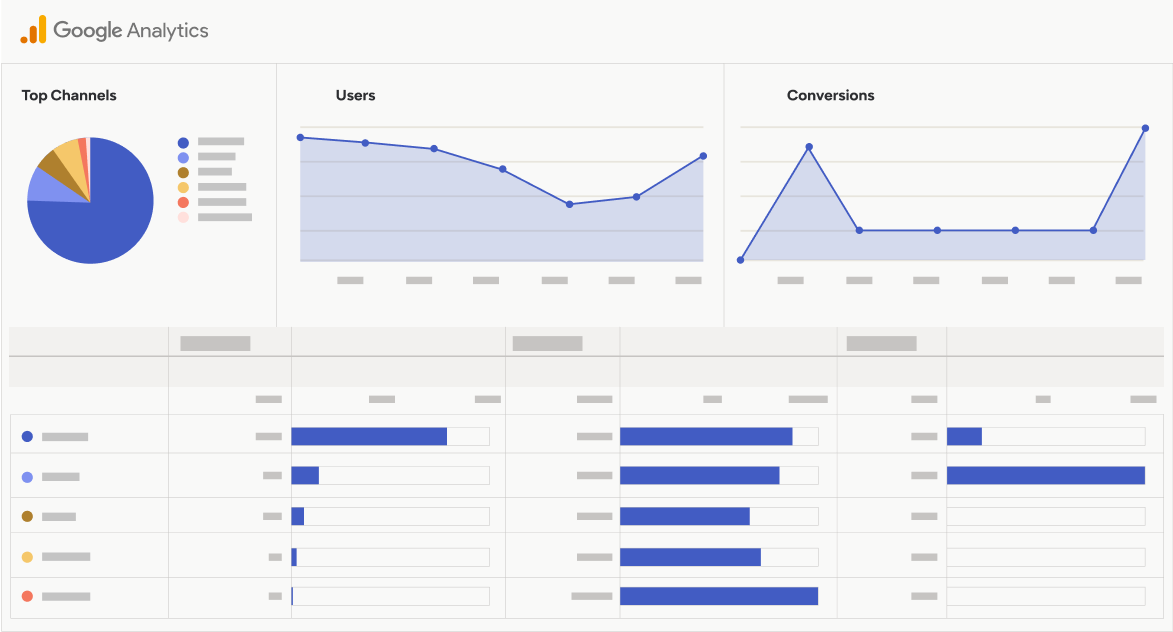Unboxing the Enigma: When Does the Google Analytics Tracking Code Send an Event Hit to Analytics?
Unboxing the Enigma: When Does the Google Analytics Tracking Code Send an Event Hit to Analytics?
Blog Article
Master Website Insights With Accurate Google Analytics Monitoring Code
The reliable utilization of Google Analytics depends upon the exact implementation of its tracking code, an essential step frequently neglected by web site proprietors. This seemingly straightforward JavaScript bit, when appropriately put, becomes the backbone of data collection, offering insights right into customer behavior and website performance. Nevertheless, challenges can develop throughout arrangement, potentially skewing the data and causing misinformed decisions. Comprehending these complexities is essential for making the most of the benefits of analytics. What are the common pitfalls that could threaten your tracking efforts, and exactly how can you make certain precision in your approach?
Comprehending Google Analytics Essentials
Google Analytics is a crucial device for website owners and marketing experts, giving very useful insights into user actions and website performance. At its core, Google Analytics accumulates information about site visitors to a web site, permitting customers to analyze metrics such as traffic sources, user interaction, and conversion rates. Understanding these fundamentals is important for maximizing an internet site's effectiveness and enhancing customer experience.
The system utilizes cookies to track communications, taping data such as web page views, session durations, and bounce prices. This details is aggregated and provided with customizable control panels, allowing customers to picture trends gradually. Trick performance signs (KPIs) can be kept an eye on, such as the total variety of users, brand-new versus returning site visitors, and the geographic distribution of the audience.
Moreover, Google Analytics supplies division functions, allowing customers to isolate details web traffic sources or individual demographics for even more targeted evaluation. By understanding these foundational aspects, web site owners can make educated decisions about material approach, marketing projects, and overall website improvements. Inevitably, understanding Google Analytics fundamentals is crucial for leveraging information to drive growth and attain business objectives successfully.
Setting Up Your Tracking Code

Duplicate the supplied tracking code and paste it into the HTML of your web site. Ideally, this code ought to be placed in the header area of every web page you wish to track. This ensures that the monitoring code lots prior to any type of various other web content, allowing it to record data accurately. There are plugins readily available that simplify the integration process. if you are utilizing a content administration system (CMS) like WordPress.
After setup, verify that the tracking code is working properly by utilizing Google Tag Assistant or the Real-Time reports in Google Analytics - when does the google analytics tracking code send an event hit to analytics?. This action is necessary to confirm that your information collection is precise and active, setting the foundation for insightful evaluation
Usual Monitoring Code Issues
Numerous website proprietors encounter typical concerns with their Google Analytics tracking code that can impede information collection and evaluation. One widespread issue is improper installation. This may happen when the monitoring code is put in the incorrect section of the internet site's HTML, typically bring about missing or insufficient information. Furthermore, having several instances of the tracking code on a solitary page you could check here can cause inflated metrics, as individual Source interactions may be counted greater than when.
Another problem develops from using advertisement blockers, which can prevent the monitoring code from executing completely, thus skewing information. when does the google analytics tracking code send an event hit to analytics?. In addition, failing to set up filters correctly can cause the exemption of necessary traffic sources or the addition of unwanted recommendation spam, distorting the information accumulated
Internet site proprietors may also overlook the significance of tracking code updates, particularly when moving to Google Analytics 4 (GA4) from Universal Analytics. Finally, insufficient screening before releasing adjustments can result in unnoticed mistakes in the tracking code, even more making complex data reliability. Addressing these common problems is crucial for ensuring accurate tracking and insightful analytics.
Analyzing Internet Site Information Properly
Precise information collection is only the initial step in leveraging Google Analytics; the real worth hinges on efficiently examining that information to drive educated decision-making. To attain this, it is vital to determine key efficiency indicators (KPIs) that straighten with your company objectives. Concentrate on metrics such as conversion rates, customer interaction, and website traffic resources, as these will certainly provide understandings right into customer actions and the general effectiveness of your site.
Making Use Of Google Analytics' segmentation functions enables for a deeper understanding of your audience. By breaking down information right into details demographics, behaviors, and traffic channels, you can discover patterns and patterns that notify targeted strategies. Executing personalized records and control panels can simplify this procedure, allowing quick accessibility to pertinent data.
Furthermore, routinely reviewing data fads with time aids to recognize anomalies and chances for renovation. Utilize visualization tools to present data in a conveniently digestible format, facilitating extra reliable communication with stakeholders. Inevitably, the capability to examine site information efficiently empowers companies to make critical decisions that improve user experience, optimize marketing efforts, and drive growth.

Best Practices for Accurate Monitoring
Executing efficient monitoring techniques is essential for obtaining trusted data in Google Analytics. To guarantee accurate tracking, start by properly installing the Google Analytics tracking code on every page of your web site. This can be completed with a tag supervisor or by straight installing the code into the HTML.
Following, configure your Google Analytics account to leave out internal website traffic. This Read Full Report can be done by setting up filters that recognize and eliminate sees from your organization's IP address, therefore protecting against manipulated data. Furthermore, use occasion monitoring to check particular user interactions, such as downloads or video clip plays, which standard page views may neglect.
Routinely audit your tracking configuration to confirm that all functions, such as goals and ecommerce tracking, are working effectively. Develop a regular naming convention for your occasions and campaigns to help with much easier coverage and evaluation.
Lastly, take into consideration leveraging UTM criteria for projects to gain understandings into the efficiency of various advertising and marketing initiatives. By complying with these finest techniques, you can improve the precision of your information collection and evaluation, ultimately bring about more informed decision-making for your internet site.
Conclusion
By ensuring the monitoring code is appropriately placed and consistently audited, web site proprietors can record vital individual communication data, therefore facilitating the recognition of key performance indications. Eventually, a durable tracking structure enhances the capacity to drive engagement and improve overall site performance.

Inadequate testing before releasing modifications can result in undetected errors in the monitoring code, even more making complex data integrity.Applying efficient tracking practices is critical for obtaining reputable information in Google Analytics. By making sure the tracking code is appropriately placed and regularly investigated, site owners can record important individual communication information, thus assisting in the recognition of vital performance signs.
Report this page